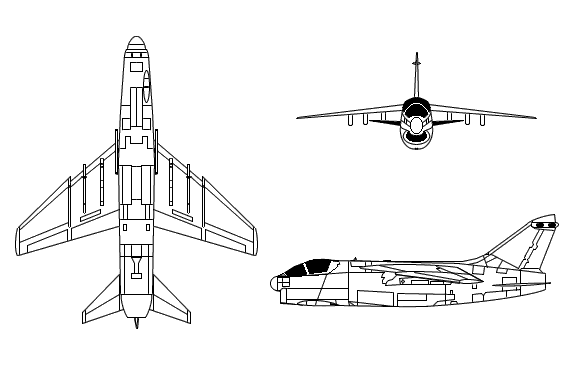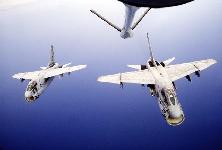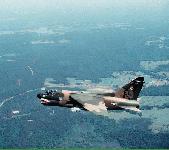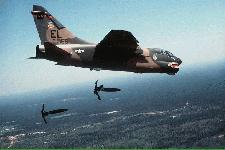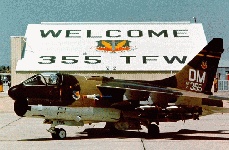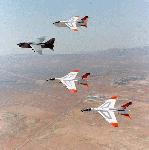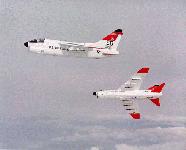Specifications
|
|
Contractor |
Ling-Temco-Vought (Prime,
now Northrop Grumman Corp.)
|
| Power Plant | Single
Allison/Rolls Royce TF41-A-400 non-afterburning turbofan
engine with a static thrust rating of 15,000 pounds
|
| Accommodations |
A-7E Pilot only
TA-7C Two seats
|
| Performance
(A-7E/TA/7C)
|
Maximum speed at
20,000 feet Mach .94
Range greater than
1,900 nautical miles
|
| Avionics & Countermeasures |
APQ-126 multi-mode nav/attack radar [Texas Instruments]
AVQ-7 raster HUD
ASN-91 INS, ASN-190 Doppler navigation system
ASU-99 projected map display
ALR-45 RWR
ALR-50 SAM warning system [Magnavox]
ALQ-126 ECM [ Sanders]
APR-43 tactical radar warning system [Loral]
ALQ-119 ECM [Westinghouse]
ALQ-131 ECM [Westinghouse]
ALQ-123 IR countermeasures [Xerox]
ALQ-126 DECM [Sanders]
ALQ-162 tactical communications jammer [Eaton AIL]
ALQ-162 radar jammer Northrup
|
| Armament
(A-7E/TA-7C) |
One internally
mounted M61A1 20 mm six barrel cannon
Six wing pylons
Two fuselage launch
stations
Pylons can carry a
large single weapon, multiple racks capable of
six weapons per rack, or triple racks with three
weapons per rack.
Can carry 15,000
pounds of payload
Compatible with
practically all first line ordnance used by the
U.S./USAF/NATO.
|
| Mission and
Capabilities |
Modern,
sophisticated, integrated, highly versatile
airborne weapon system platform
Capable of performing
a variety of search, surveillance, and attack
missions
Can carry four
externally wing-mounted 300 gallon fuel tanks,
coupled with a variety of ordnance on remaining
stations.
Can conduct in-flight
refueling operations
Capable of
transferring more than 12,000 pounds of fuel
Fully integrated
digital navigation/weapon delivery system is
common to all current USN/USAF attack aircraft.
Avionics
system—which is based on state-of-the-art
electronics, digital computing techniques, and an
automation philosophy—provides unparalleled
mission effectiveness and flexibility.
The Forward Looking
Infrared (FLIR) capability means the A-7's night
attack accuracy is equivalent to day attack
accuracy.
Consistently capable
of delivering bombs with an accuracy of less than
10 mils Circular Error Probable (CEP) and guns at
less than 5 mils CEP.
During Desert Storm,
demonstrated more than 95% operational readiness
and did not miss a single combat sortie.
Has flown more than
120,000 combat sorties and provided unprecedented
response in Vietnam, Libya, Grenada, Panama, and
Desert Storm.
Survivability is
enhanced via armor plating in critical areas and
a state-of-the art DECM.
Modernized with a new
solid-state rate gyro assembly in the Automatic
Flight Control System and a wing enhancement
program that virtually eliminates flight hours as
a constraint for measuring aircraft service life.
Average
scheduled/unscheduled direct maintenance man
hours per flight hour is 11.
|
